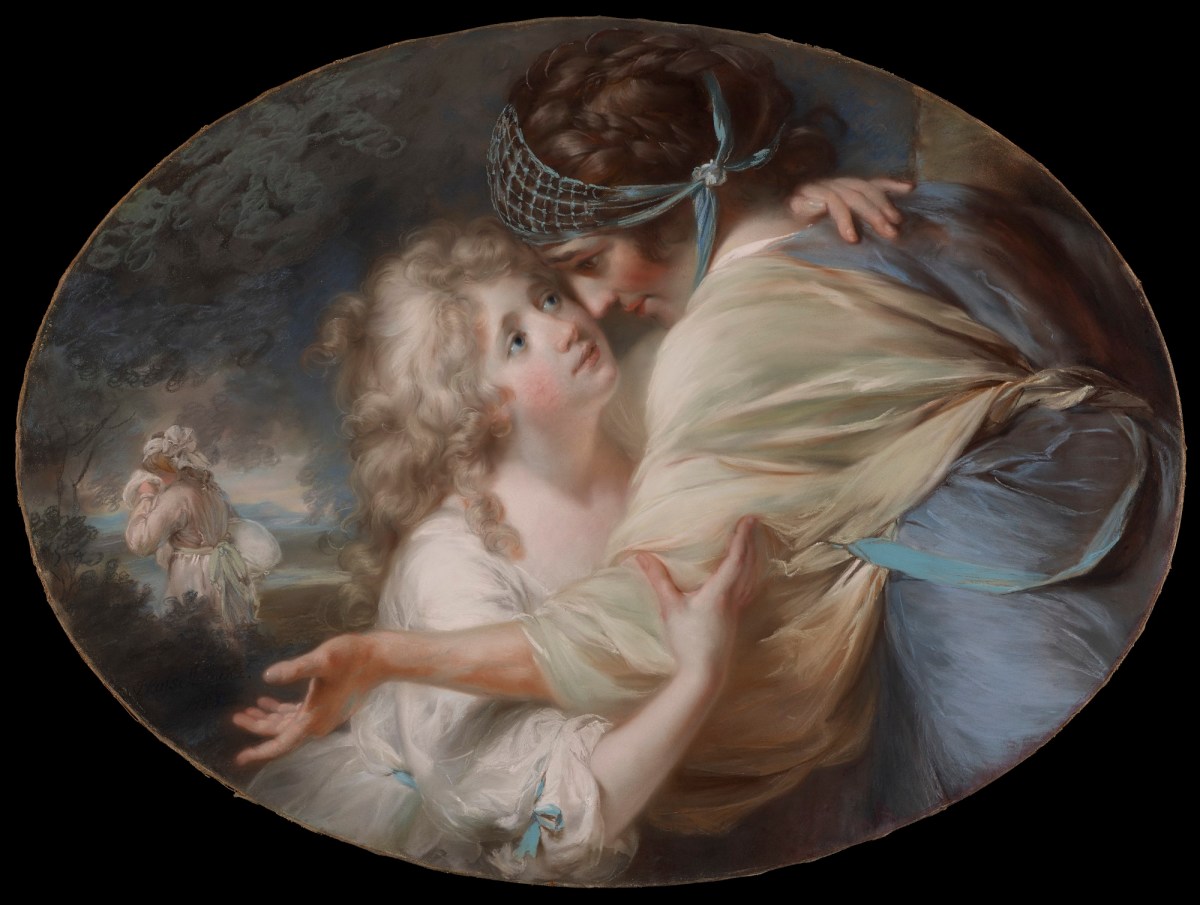
John Russell RA, Naomi and Ruth, by 1788.
Pastel on paper. 810 mm x 1070 mm x 38 mm. © Photo: Royal Academy of Arts, London.
This image is not available to download. To licence this image for commercial purposes, contact our Picture Library at picturelibrary@royalacademy.org.uk
Naomi and Ruth, by 1788
John Russell RA (1745 - 1806)
RA Collection: Art
This pastel depicting a scene from the Old Testament (Book of Ruth, i, 14-16) is the Diploma work presented to the Royal Academy by John Russell in 1788.
The artist depicted the scene after Naomi's sons have both died and she is left in Moab with their widows, Orpah and Ruth. Intent on returning to Israel, Naomi tells her daughters-in-law that they should not accompany her. Orpah returns to her own family but Ruth refuses to leave her mother-in-law, saying 'wherever you go, I shall go and where you stay, I shall stay. Your people shall be my people and your God shall be my God'. Russell's treatment of the subject is unusual in that he shows a close-up view of the two main protagonists with the figure of the departing Orpah in the distance. Most depictions of this scene show the figures full-length and standing in a landscape.
A follower of the Methodist preacher George Whitefield (1714-1770), John Russell recorded his 'conversion' in his diary in September 1764. His artistic output seems to have been unaffected by spiritual preoccupations and focused instead on society portraits and light-hearted genre scenes. This drawing of Naomi and Ruth appears to have been his only attempt to address biblical or religious subject matter. This perhaps reflects a serious approach to his Diploma work, however, the biblical title is little more than a gloss on what could easily pass as a 'fancy picture'. Russell also produced a replica of (or perhaps a study for) this pastel that was owned by his daughter Henrietta Ann and bequeathed to her son Mainwaring Shurlock (see Williamson p. 164).
Russell was the son of a book and printseller who was also an artist and the Mayor of Guildford. He studied with Francis Cotes and won prizes from the Society of Arts in 1759 and 1760 before being admitted to the Royal Academy Schools in 1770. At this time he also took up drawing in pastels and wrote a guide to this technique, Elements of Painting with Crayons , published in 1772, the same year in which he was elected A.R.A. In 1788 he became a full Academician and was appointed Crayon Painter to King George III the following year.
Russell also became an astronomer and, through his interest in this subject, was introduced to Sir William Herschel and other important members of the Royal Society, some of whose portraits he painted. He continued to live by a strict moral code from the time of his conversion onwards. He did not wish to appear 'disrepectful' by turning down invitations to dine at the Academy yet he disliked the general tone of conversation at such functions. Writing in 1773, for instance, Russell complained that he was 'obliged to fly from the R.A. as they were full of filthy blasphemy' (Williamson p. 33).
Further reading:
George C. Williamson, John Russell R.A. , 1894, London
Object details
810 mm x 1070 mm x 38 mm
Associated works of art
2 results
Start exploring the RA Collection
- Explore art works, paint-smeared palettes, scribbled letters and more...
- Artists and architects have run the RA for 250 years.
Our Collection is a record of them.





